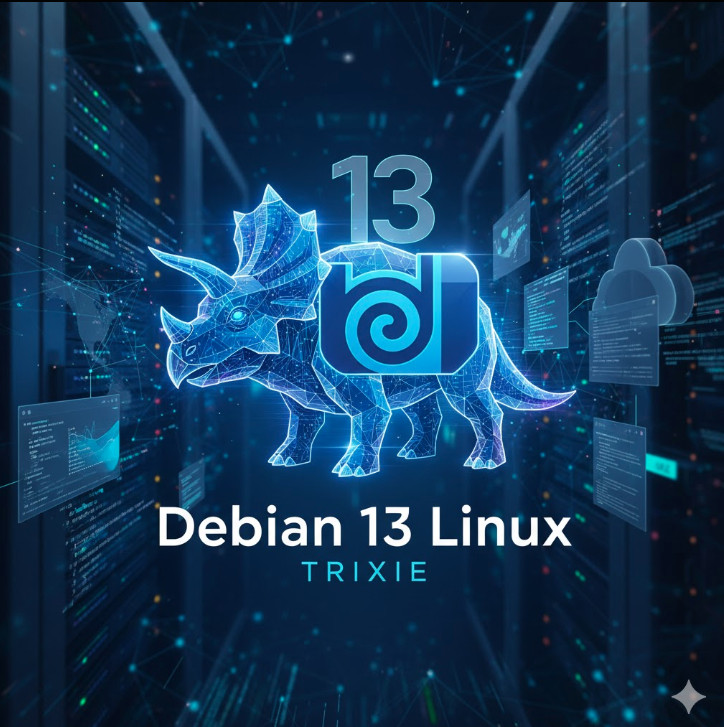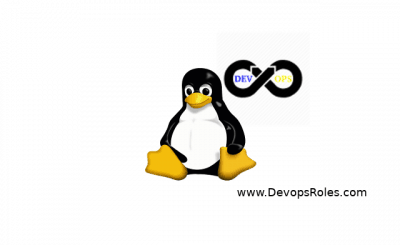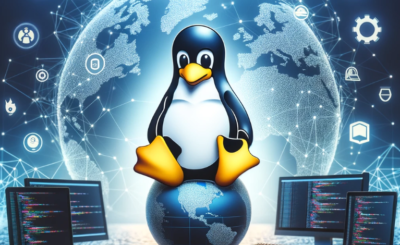The open-source community is eagerly anticipating the next major release from one of its most foundational projects. Codenamed ‘Trixie’, the upcoming Debian 13 Linux is set to be a landmark update, and this guide will explore the key features that make this release essential for all users.
‘Trixie’ promises a wealth of improvements, from critical security enhancements to a more polished user experience. It will feature a modern kernel, an updated software toolchain, and refreshed desktop environments, ensuring a more powerful and efficient system from the ground up.
For the professionals who depend on Debian’s legendary stability—including system administrators, DevOps engineers, and developers—understanding these changes is crucial. We will unpack what makes this a release worth watching and preparing for.
Table of Contents
- 1 The Road to Debian 13 “Trixie”: Release Cycle and Expectations
- 2 What’s New? Core System and Kernel Updates in Debian 13 Linux
- 3 A Refreshed Desktop Experience: DE Updates
- 4 For Developers and SysAdmins: Key Package Upgrades
- 5 How to Prepare for the Upgrade to Debian 13
- 6 Frequently Asked Questions
- 7 Conclusion
The Road to Debian 13 “Trixie”: Release Cycle and Expectations
Before diving into the new features, it’s helpful to understand where ‘Trixie’ fits within Debian’s methodical release process. This process is the very reason for its reputation as a rock-solid distribution.
Understanding the Debian Release Cycle
Debian’s development is split into three main branches:
- Stable: This is the official release, currently Debian 12 ‘Bookworm’. It receives long-term security support and is recommended for production environments.
- Testing: This branch contains packages that are being prepared for the next stable release. Right now, ‘Trixie’ is the testing distribution.
- Unstable (Sid): This is the development branch where new packages are introduced and initial testing occurs.
Packages migrate from Unstable to Testing after meeting certain criteria, such as a lack of release-critical bugs. Eventually, the Testing branch is “frozen,” signaling the final phase of development before it becomes the new Stable release.
Projected Release Date for Debian 13 Linux
The Debian Project doesn’t operate on a fixed release schedule, but it has consistently followed a two-year cycle for major releases. Debian 12 ‘Bookworm’ was released in June 2023. Following this pattern, we can expect Debian 13 ‘Trixie’ to be released in mid-2025. The development freeze will likely begin in early 2025, giving developers and users a clear picture of the final feature set.
What’s New? Core System and Kernel Updates in Debian 13 Linux
The core of any Linux distribution is its kernel and system libraries. ‘Trixie’ will bring significant updates in this area, enhancing performance, hardware support, and security.
The Heart of Trixie: A Modern Linux Kernel
Debian 13 is expected to ship with a much newer Linux Kernel, likely version 6.8 or newer. This is a massive leap forward, bringing a host of improvements:
- Expanded Hardware Support: Better support for the latest Intel and AMD CPUs, new GPUs (including Intel Battlemage and AMD RDNA 3), and emerging technologies like Wi-Fi 7.
- Performance Enhancements: The new kernel includes numerous optimizations to the scheduler, I/O handling, and networking stack, resulting in a more responsive and efficient system.
- Filesystem Improvements: Significant updates for filesystems like Btrfs and EXT4, including performance boosts and new features.
- Enhanced Security: Newer kernels incorporate the latest security mitigations for hardware vulnerabilities and provide more robust security features.
Toolchain and Core Utilities Upgrade
The core toolchain—the set of programming tools used to create the operating system itself—is receiving a major refresh. We anticipate updated versions of:
- GCC (GNU Compiler Collection): Likely version 13 or 14, offering better C++20/23 standard support, improved diagnostics, and better code optimization.
- Glibc (GNU C Library): A newer version will provide critical bug fixes, performance improvements, and support for new kernel features.
- Binutils: Updated versions of tools like the linker (
ld) and assembler (as) are essential for building modern software.
These updates are vital for developers who need to build and run software on a modern, secure, and performant platform.
A Refreshed Desktop Experience: DE Updates
Debian isn’t just for servers; it’s also a powerful desktop operating system. ‘Trixie’ will feature the latest versions of all major desktop environments, offering a more polished and feature-rich user experience.
GNOME 47/48: A Modernized Interface
Debian’s default desktop, GNOME, will likely be updated to version 47 or 48. Users can expect continued refinement of the user interface, improved Wayland support, better performance, and enhancements to core apps like Nautilus (Files) and the GNOME Software center. The focus will be on usability, accessibility, and a clean, modern aesthetic.
KDE Plasma 6: The Wayland-First Future
One of the most exciting updates will be the inclusion of KDE Plasma 6. This is a major milestone for the KDE project, built on the new Qt 6 framework. Key highlights include:
- Wayland by Default: Plasma 6 defaults to the Wayland display protocol, offering smoother graphics, better security, and superior handling of modern display features like fractional scaling.
- Visual Refresh: A cleaner, more modern look and feel with updated themes and components.
- Core App Rewrite: Many core KDE applications have been ported to Qt 6, improving performance and maintainability.
Updates for XFCE, MATE, and Other Environments
Users of other desktop environments won’t be left out. Debian 13 will include the latest stable versions of XFCE, MATE, Cinnamon, and LXQt, all benefiting from their respective upstream improvements, bug fixes, and feature additions.
For Developers and SysAdmins: Key Package Upgrades
Debian 13 will be an excellent platform for development and system administration, thanks to updated versions of critical software packages.
Programming Languages and Runtimes
Expect the latest stable versions of major programming languages, including:
- Python 3.12+
- PHP 8.3+
- Ruby 3.2+
- Node.js 20+ (LTS) or newer
- Perl 5.38+
Server Software and Databases
Server administrators will appreciate updated versions of essential software:
- Apache 2.4.x
- Nginx 1.24.x+
- PostgreSQL 16+
- MariaDB 10.11+
These updates bring not just new features but also crucial security patches and performance optimizations, ensuring that servers running Debian remain secure and efficient. Maintaining up-to-date systems is a core principle recommended by authorities like the Cybersecurity and Infrastructure Security Agency (CISA).
How to Prepare for the Upgrade to Debian 13
While the final release is still some time away, it’s never too early to plan. A smooth upgrade from Debian 12 to Debian 13 requires careful preparation.
Best Practices for a Smooth Transition
- Backup Everything: Before attempting any major upgrade, perform a full backup of your system and critical data. Tools like
rsyncor dedicated backup solutions are your best friend. - Update Your Current System: Ensure your Debian 12 system is fully up-to-date. Run
sudo apt update && sudo apt full-upgradeand resolve any pending issues. - Read the Release Notes: Once they are published, read the official Debian 13 release notes thoroughly. They will contain critical information about potential issues and configuration changes.
A Step-by-Step Upgrade Command Sequence
When the time comes, the upgrade process involves changing your APT sources and running the upgrade commands. First, edit your /etc/apt/sources.list file and any files in /etc/apt/sources.list.d/, changing every instance of bookworm (Debian 12) to trixie (Debian 13).
After modifying your sources, execute the following commands in order:
# Step 1: Update the package lists with the new 'trixie' sources
sudo apt update
# Step 2: Perform a minimal system upgrade first
# This upgrades packages that can be updated without removing or installing others
sudo apt upgrade --without-new-pkgs
# Step 3: Perform the full system upgrade to Debian 13
# This will handle changing dependencies, installing new packages, and removing obsolete ones
sudo apt full-upgrade
# Step 4: Clean up obsolete packages
sudo apt autoremove
# Step 5: Reboot into your new Debian 13 system
sudo rebootFrequently Asked Questions
When will Debian 13 “Trixie” be released?
Based on Debian’s typical two-year release cycle, the stable release of Debian 13 is expected in mid-2025.
What Linux kernel version will Debian 13 use?
It is expected to ship with a modern kernel, likely version 6.8 or a newer long-term support (LTS) version available at the time of the freeze.
Is it safe to upgrade from Debian 12 to Debian 13 right after release?
For production systems, it is often wise to wait a few weeks or for the first point release (e.g., 13.1) to allow any early bugs to be ironed out. For non-critical systems, upgrading shortly after release is generally safe if you follow the official instructions.
Will Debian 13 still support 32-bit (i386) systems?
This is a topic of ongoing discussion. While support for the 32-bit PC (i386) architecture may be dropped, a final decision will be confirmed closer to the release. For the most current information, consult the official Debian website.
What is the codename “Trixie” from?
Debian release codenames are traditionally taken from characters in the Disney/Pixar “Toy Story” movies. Trixie is the blue triceratops toy.

Conclusion
Debian 13 ‘Trixie’ is poised to be another outstanding release, reinforcing Debian’s commitment to providing a free, stable, and powerful operating system. With a modern Linux kernel, refreshed desktop environments like KDE Plasma 6, and updated versions of thousands of software packages, it offers compelling reasons to upgrade for both desktop users and system administrators. The focus on improved hardware support, performance, and security ensures that the Debian 13 Linux distribution will continue to be a top-tier choice for servers, workstations, and embedded systems for years to come. As the development cycle progresses, we can look forward to a polished and reliable OS that continues to power a significant portion of the digital world. Thank you for reading the DevopsRoles page!


